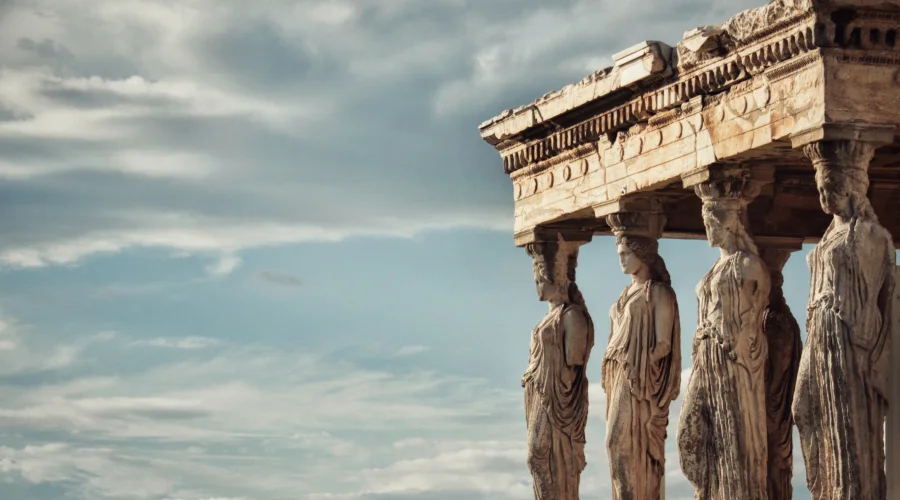The Acropolis of Greece: Managing Daily Visits and Staggered Entrance Times Starting in September

The Acropolis of Athens, a symbol of ancient Greek civilization and a UNESCO World Heritage site, has long been a must-visit destination for travelers from around the world. To ensure the preservation of this iconic historical site and enhance the visitor experience, new measures have been introduced, including daily visit limits and staggered entrance times, beginning in September.
Preserving a Cultural Treasure
The Acropolis, with its breathtaking Parthenon temple and panoramic views of Athens, stands as a testament to the architectural and cultural achievements of ancient Greece. However, the popularity of this iconic site has brought challenges related to preserving its historical integrity and managing the impact of mass tourism. Starting in September, a daily visitor limit will be enforced at the Acropolis. This measure is aimed at preventing overcrowding, reducing wear and tear on the ancient structures, and ensuring a more enjoyable and contemplative experience for those who make the pilgrimage to this historical marvel. By setting a limit on the number of visitors allowed each day, authorities hope to strike a balance between the preservation of the site and the opportunity for travelers to immerse themselves in its rich history.
Staggered Entrance Times
In addition to daily visit limits, staggered entrance times will be implemented to further manage the flow of visitors. This system will help reduce congestion at key points of interest within the Acropolis complex and ensure a more peaceful and informative experience for everyone. Staggered entrance times will also help distribute the environmental impact of tourism more evenly throughout the day, reducing the strain on the site’s infrastructure and surrounding environment. While these measures may require visitors to plan their trips with greater precision, they are ultimately aimed at enhancing the overall experience of exploring the Acropolis. By managing the number of visitors and their entry times, tourists will have the opportunity to appreciate the historical significance and architectural marvels of this ancient site without the distractions of large crowds.

Planning Ahead
Before your trip, take time to research the history and significance of the Acropolis. Understanding the significance of the site will allow you to appreciate it even more during your visit. Research opening hours, entrance fees and the high/low season to avoid crowds and ensure it will be open during your visit. If possible, purchase your tickets online in advance to avoid long lines at the entrance. Make sure you know the prices and ticket options available. Sometimes Acropolis tickets also include access to other archaeological sites in Athens, such as the Ancient Agora. Choose comfortable clothing and footwear suitable for walking, as the Acropolis involves walking on rocky terrain. Bring water and sunscreen, especially in the summer months. Don’t forget a hat or cap to protect you from the sun.
The Ongoing Relevance of the Acropolis
The Acropolis of Athens remains a symbol of Greece’s enduring cultural legacy and a testament to the heights of human achievement in art, architecture, and philosophy. By implementing these measures to manage visitor numbers and preserve the site, Greek authorities are ensuring that future generations will have the opportunity to marvel at this historical treasure and connect with the ancient world. As the Acropolis continues to inspire and captivate visitors from around the globe, these measures reflect a commitment to its enduring significance and the desire to offer a more meaningful and sustainable experience to all who come to explore its wonders.

Conclusion
Exploring the Acropolis is a journey into the past, but it is also a stimulus for reflection on the lasting impact of ancient Greece on our society today. Democracy, rhetoric and the pursuit of knowledge are legacies that still resonate throughout the world. This visit also reminds us of the importance of preserving our cultural heritage. The Acropolis has withstood the passage of centuries and the ravages of time, and every effort to preserve its beauty and authenticity is a tribute to respect for history and culture. The Acropolis is a symbol of the greatness of Greek civilisation and an invitation to connect with our past and reflect on our present. Visiting this site is a privilege, an experience that enriches our understanding of history and the importance of preserving our cultural heritage. The Acropolis is not just a monument to ancient Greece; it is a beacon of light that illuminates our path in the constant search for knowledge, beauty and appreciation of our shared history.









